Saving the St. Vincent Parrot
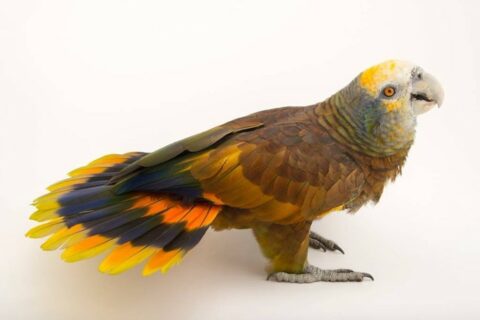
Outside of St. Vincent, an island in the Caribbean, the Houston Zoo is the only place in North America to have a captive breeding colony of St. Vincent and the Grenadines’ national bird, the St. Vincent amazon. Vulnerable in the wild, the population of this parrot was estimated to be near 500 birds, with another 43 captive birds residing at the Nicholas Wildlife Aviary Complex and other locations on the island – these birds have been rescued from various injuries and confiscations over the years and are not releasable.
On April 9, 2021, a volcano on the northern side of the island erupted for the first time since 1979. After nearly a month and 32 eruptions, the hazard level was downgraded from red to orange, but the massive explosions blanketed parts of the island with heavy ash, damaging buildings, disrupting water supplies, and displacing over 20% of the island’s 100,000 people.
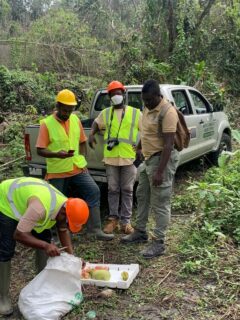
Upon hearing about the volcano activity, the Zoo immediately reached out to the St. Vincent Forestry Department to offer support and discuss immediate and short-term needs to save the St. Vincent Amazon from extinction. “We had to act fast to find out how we could help,” said Renee Bumpus, senior director of wildlife conservation. “It was difficult to see how many people were evacuating, I had worked with conservation colleague, Bradford Latham, the St. Vincent Forestry Department’s Unit Supervisor, in the past, so I reached out to offer the Zoo’s support.”
The St. Vincent Forestry Department values the Zoo’s experience with this species and requested knowledge exchange and training opportunities. So far, the Zoo has conducted a virtual training on the Zoo’s St. Vincent amazon reproduction experiences and provided feedback and resources for the Forestry Department’s animal care staff.
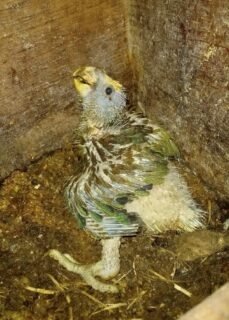
Although the volcano’s impact on the St. Vincent amazon numbers is still unknown, there are glimmers of hope, as Bradford recently reported hearing and seeing a few wild parrots – he and his team did not evacuate the island during the eruptions, and have been working tirelessly in search and rescue efforts for any wildlife in need of care. They have set up many feed stations for wildlife. Miraculously, thanks to their dedication and care, just after the eruptions, a St. Vincent amazon chick hatched in the aviary and is successfully being raised by its parents.
The Zoo also provided hiking boots for all St. Vincent Forestry Department staff to trek through altered and treacherous terrain to perform wildlife population monitoring and census work. This work will reveal the quantity of wild parrots remaining, and their locations on the island now. The eruption coincided with breeding season for the wild birds so they hope to discover adults with chicks. The team will then help the remaining wild population, by providing supplementary feed stations, until the vegetation restores itself again on the island.
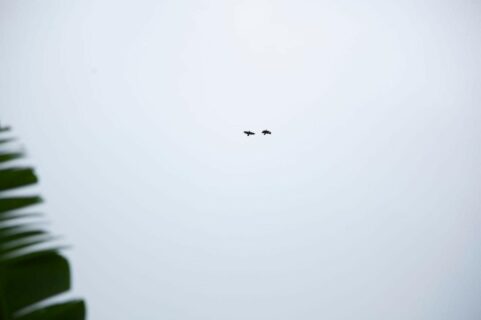
The Zoo has a long history with this species and is the longest serving captive breeding facility. We currently house 10 St. Vincent parrots, and we were the first organization in the world to successfully reproduce this species in captivity in 1972. Since this initial breeding, the Zoo has hatched 3 more chicks. The St. Vincent amazon is one of the most challenging birds to breed in captivity.
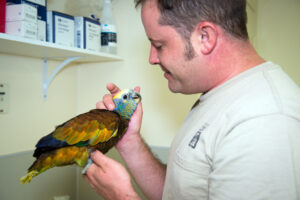
The island of St. Vincent and their beautiful parrots hold a special place in the heart of Chris Holmes, the Zoo’s curator of birds. He has worked closely with the St. Vincent amazon for over 20 years at the Zoo and traveled to the island to assist the Forestry Department in St. Vincent amazon field work in 2006. “I have been fortunate to dedicate much of my career to this magnificent species at the Zoo and got to travel to St. Vincent to assist with protection work,” said Chris Holmes. “I’m in awe of the St. Vincent Forestry Department staffs’ devotion to save their national bird, the St. Vincent parrot.”
Every time you visit the Zoo, you’re supporting our wildlife-saving efforts, ensuring that animals like the St. Vincent amazon do not go extinct.
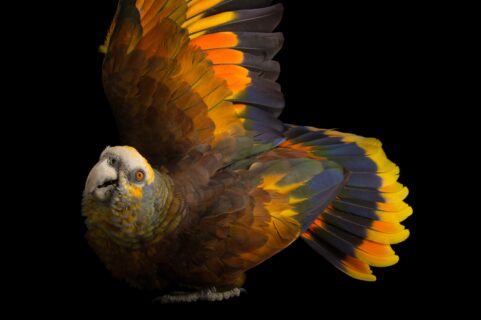
This blog was written by Houston Zoo staff: Renee Bumpus, Chris Holmes, and Rachael Shappard; and St. Vincent Forestry Unit Supervisor, Bradford Latham
